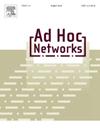Intelligent edge–fog interplay for healthcare informatics: A blockchain perspective
IF 4.4
3区 计算机科学
Q1 COMPUTER SCIENCE, INFORMATION SYSTEMS
引用次数: 0
Abstract
This paper explores artificial intelligence (AI) and edge–fog interplay to strengthen healthcare informatics (HCI), while also considering the blockchain perspective for securing HCI to transform cloud-based HCI to edge–fog-based HCI to serve real-time responses for critical healthcare applications. This article discusses that AI is vital in providing better healthcare, precision medicine, and personalized treatments. A comprehensive review of edge–fog interplay-based HCI and blockchain-based HCI demonstrated the need for integrating blockchain and edge–fog interplay for successful HCI. Subsequently, some current research projects explore edge computing, fog computing, and blockchain in the healthcare sector to securely store and share patient data, thereby providing real-time data analysis, which is also highlighted. The latter part reflects some essential aspects of blockchain in healthcare, such as immutability, trustworthiness, and traceability. We also present a case study on AI-edge–fog interplay, and blockchain on heart stroke prediction for HCI that examines the practical application of the amalgamation of such technologies required to refine the healthcare sector to support the proposed analysis. Finally, this work discusses the future challenges of integrating AI, edge–fog interplay, and blockchain in the field of HCI.
求助全文
约1分钟内获得全文
求助全文
来源期刊

Ad Hoc Networks
工程技术-电信学
CiteScore
10.20
自引率
4.20%
发文量
131
审稿时长
4.8 months
期刊介绍:
The Ad Hoc Networks is an international and archival journal providing a publication vehicle for complete coverage of all topics of interest to those involved in ad hoc and sensor networking areas. The Ad Hoc Networks considers original, high quality and unpublished contributions addressing all aspects of ad hoc and sensor networks. Specific areas of interest include, but are not limited to:
Mobile and Wireless Ad Hoc Networks
Sensor Networks
Wireless Local and Personal Area Networks
Home Networks
Ad Hoc Networks of Autonomous Intelligent Systems
Novel Architectures for Ad Hoc and Sensor Networks
Self-organizing Network Architectures and Protocols
Transport Layer Protocols
Routing protocols (unicast, multicast, geocast, etc.)
Media Access Control Techniques
Error Control Schemes
Power-Aware, Low-Power and Energy-Efficient Designs
Synchronization and Scheduling Issues
Mobility Management
Mobility-Tolerant Communication Protocols
Location Tracking and Location-based Services
Resource and Information Management
Security and Fault-Tolerance Issues
Hardware and Software Platforms, Systems, and Testbeds
Experimental and Prototype Results
Quality-of-Service Issues
Cross-Layer Interactions
Scalability Issues
Performance Analysis and Simulation of Protocols.
 求助内容:
求助内容: 应助结果提醒方式:
应助结果提醒方式:


